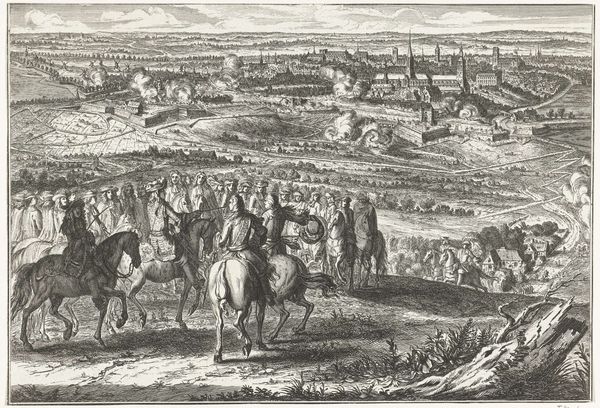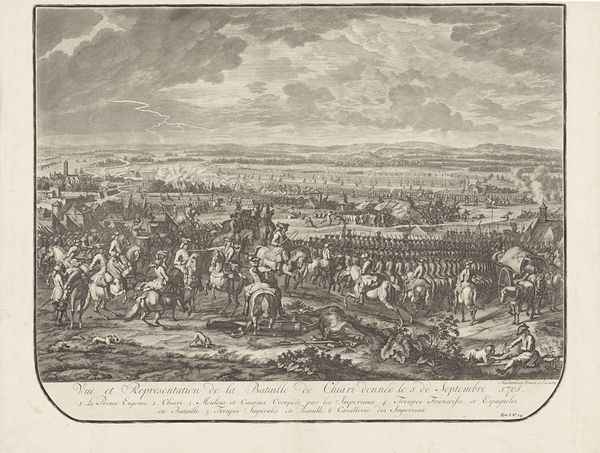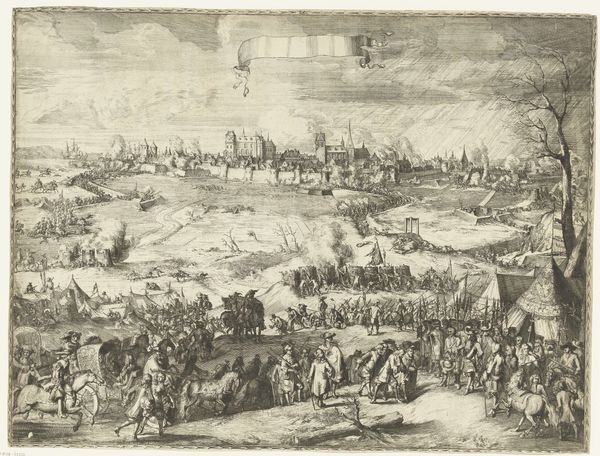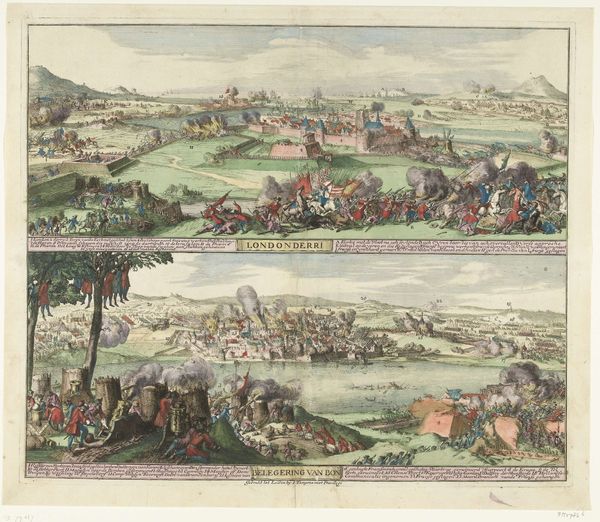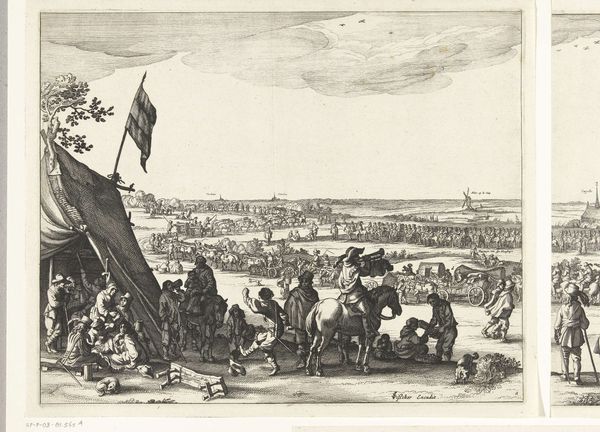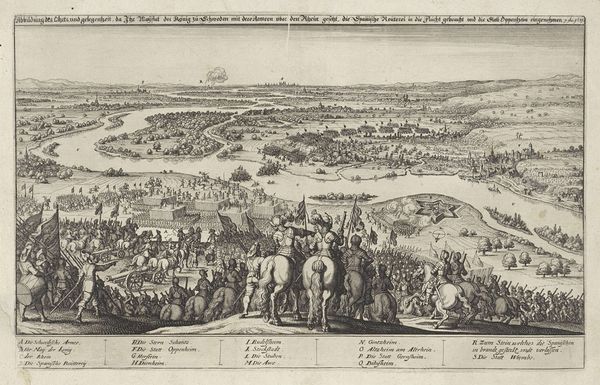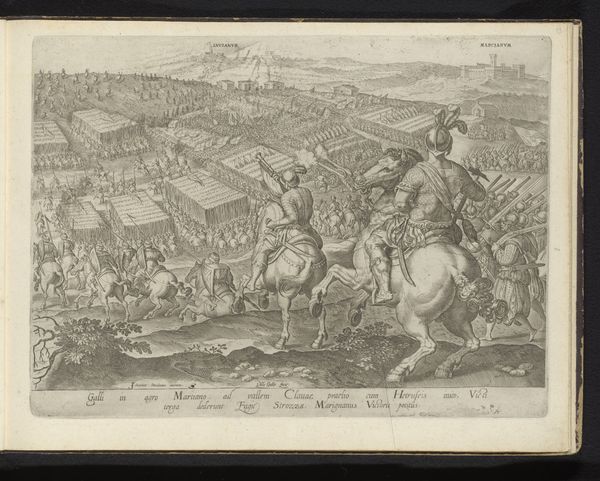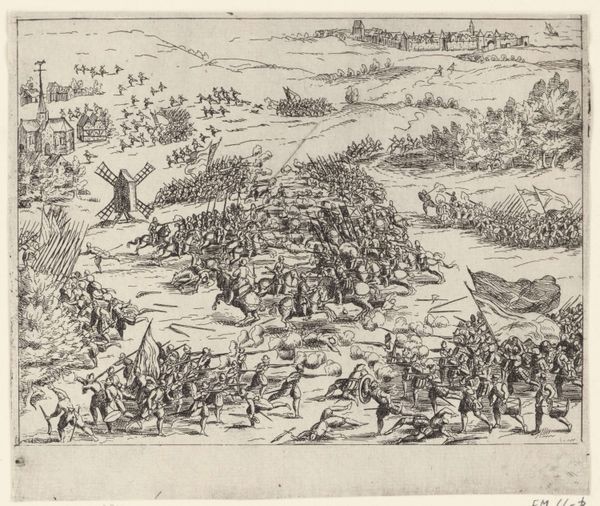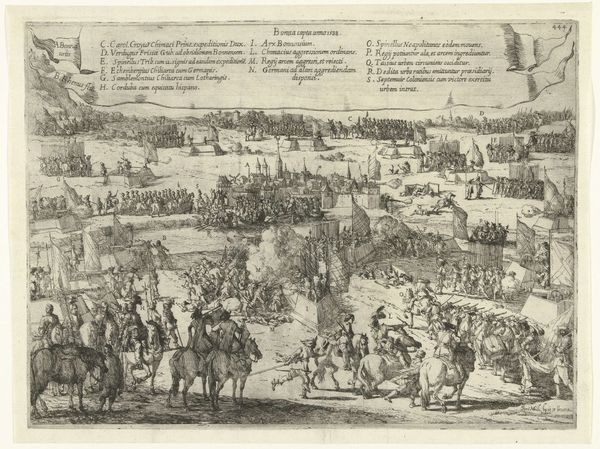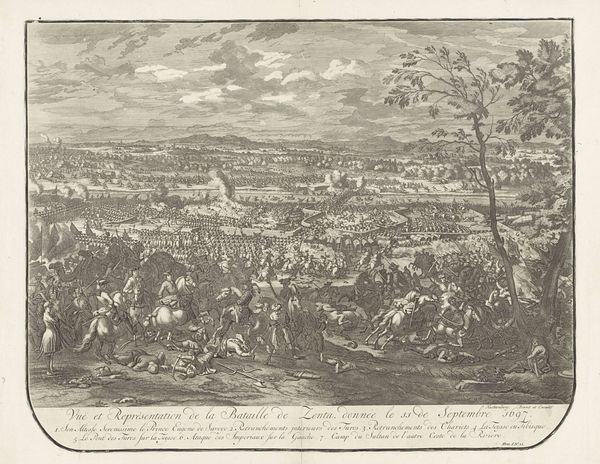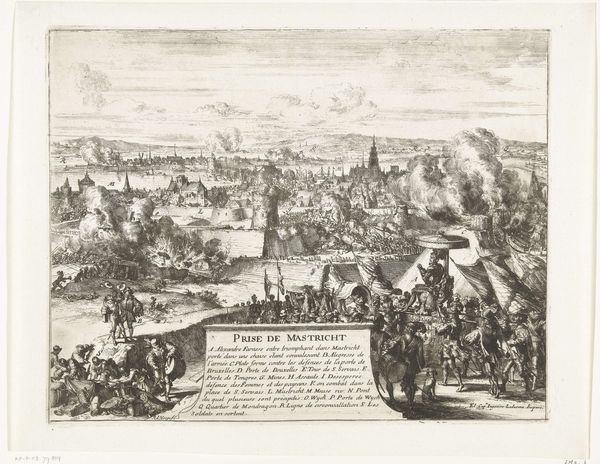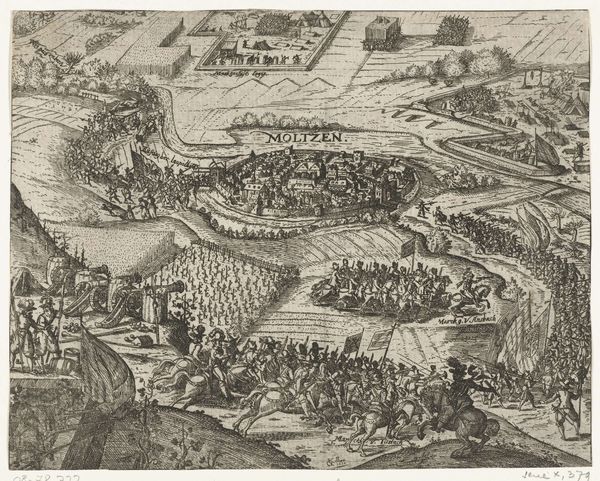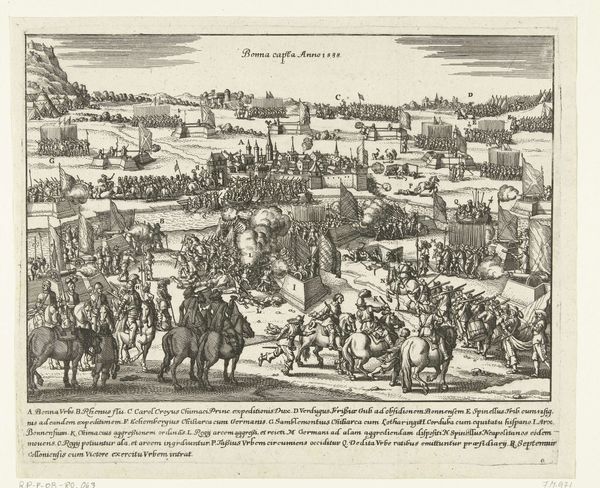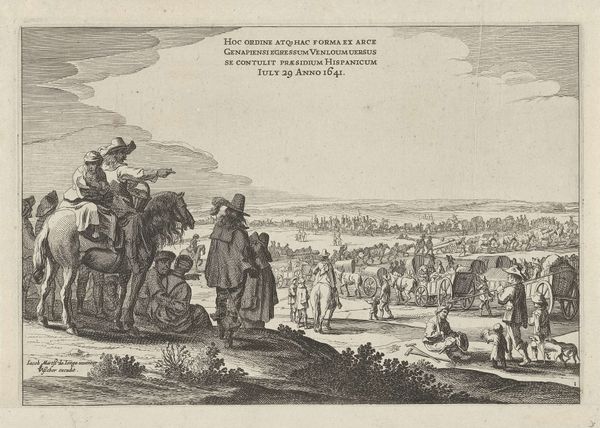
painting, oil-paint
#
baroque
#
painting
#
oil-paint
#
landscape
#
oil painting
#
genre-painting
#
history-painting
Dimensions: support height 64.2 cm, support width 86.8 cm, outer size depth 7.8 cm
Copyright: Rijks Museum: Open Domain
Curator: What a bird’s eye view! There’s a strange detachment in Lambert de Hondt’s oil painting from around 1675 entitled "French Commanders at the Siege of Rheinberg, 1672." Editor: Detachment, absolutely. The first impression is…sterile. Regimented. Like looking at a strategic map rather than witnessing a chaotic siege. The color palette is almost exclusively pale greens and browns. What was his process for a scene with so much detail? Curator: The panoramic perspective, while distancing, also allows for a wealth of detail to be captured. Each pointed fortress and angled canal has a deliberate geometric presence. Think about how those star-shaped fortifications ripple with historical meaning, conjuring up a period where strategic engineering defined the theatre of war, reshaping landscape and psyche. It's almost architectural. Editor: Yes, and if you zoom into the central figures, their clothes appear far more detailed than other human figures scattered in the wider environment. I am immediately drawn to the material aspect - how would the artist work with layering techniques to emphasize such disparities in detail, guiding the audience’s vision towards these elite social spheres? The siege becomes mere backdrop for these guys in silk, which feels more like Baroque stagecraft than witness to lived experiences. Curator: Exactly, these weren’t battle-worn soldiers, were they? Instead, notice the carefully constructed hierarchy. Even the placement of the commanders on horseback looking down on the events reflects this. Hondt’s composition reflects the inherent human need for a symbol and an image to focus attention on. But doesn't it seem devoid of actual narrative power? Editor: It speaks volumes, though, of a particular power dynamic: one where elites survey, and the labor is left to the anonymous many, where human beings and resources alike are flattened into strategic assets in the execution of power. Curator: Ultimately, whether intentional or not, Hondt has left us with more than just a document; he's presented a lens to examine the symbols we use to construct stories of victory and authority. Editor: For me, seeing how this painting manipulates texture and perspective reveals more than any romantic depiction ever could about how social inequality has long been interwoven into the very fabric—the literal canvas, in this case—of historical representation.
Comments
No comments
Be the first to comment and join the conversation on the ultimate creative platform.
